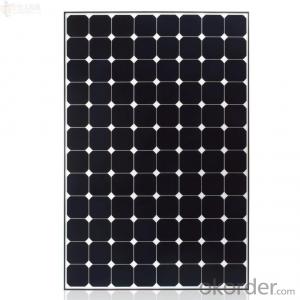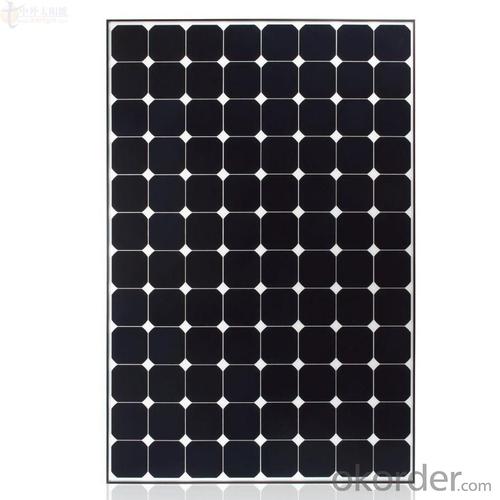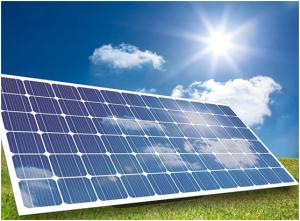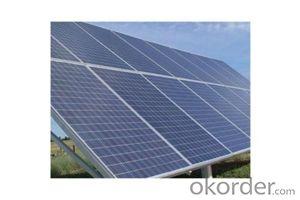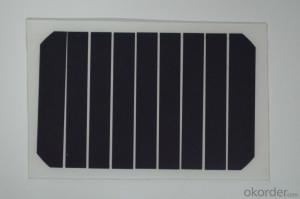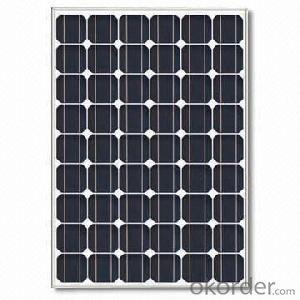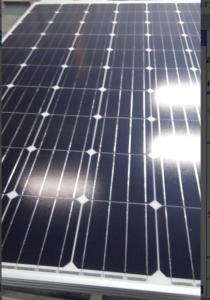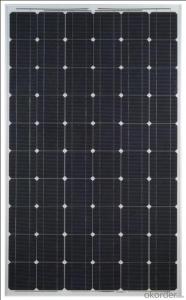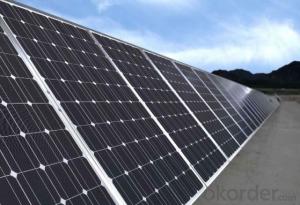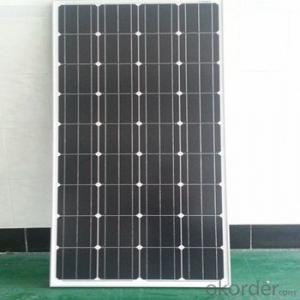2000W High Quality 180W Monocrystalline Solar Panel CNBM
- Loading Port:
- Qingdao
- Payment Terms:
- TT OR LC
- Min Order Qty:
- 10 set
- Supply Capability:
- 300000 set/month
OKorder Service Pledge
OKorder Financial Service
You Might Also Like
1.5W to 180W Monocrystalline Solar Panel
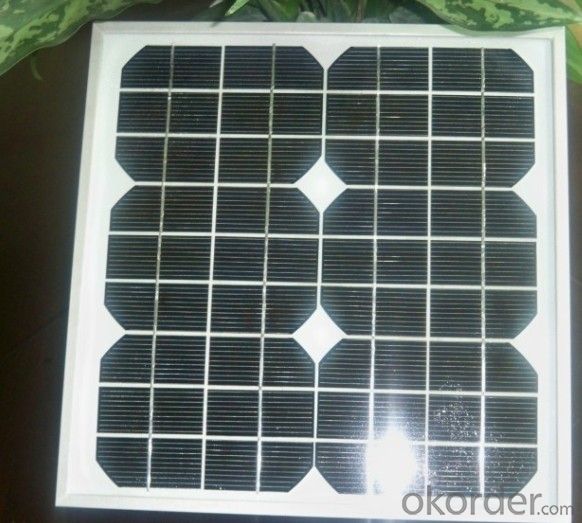
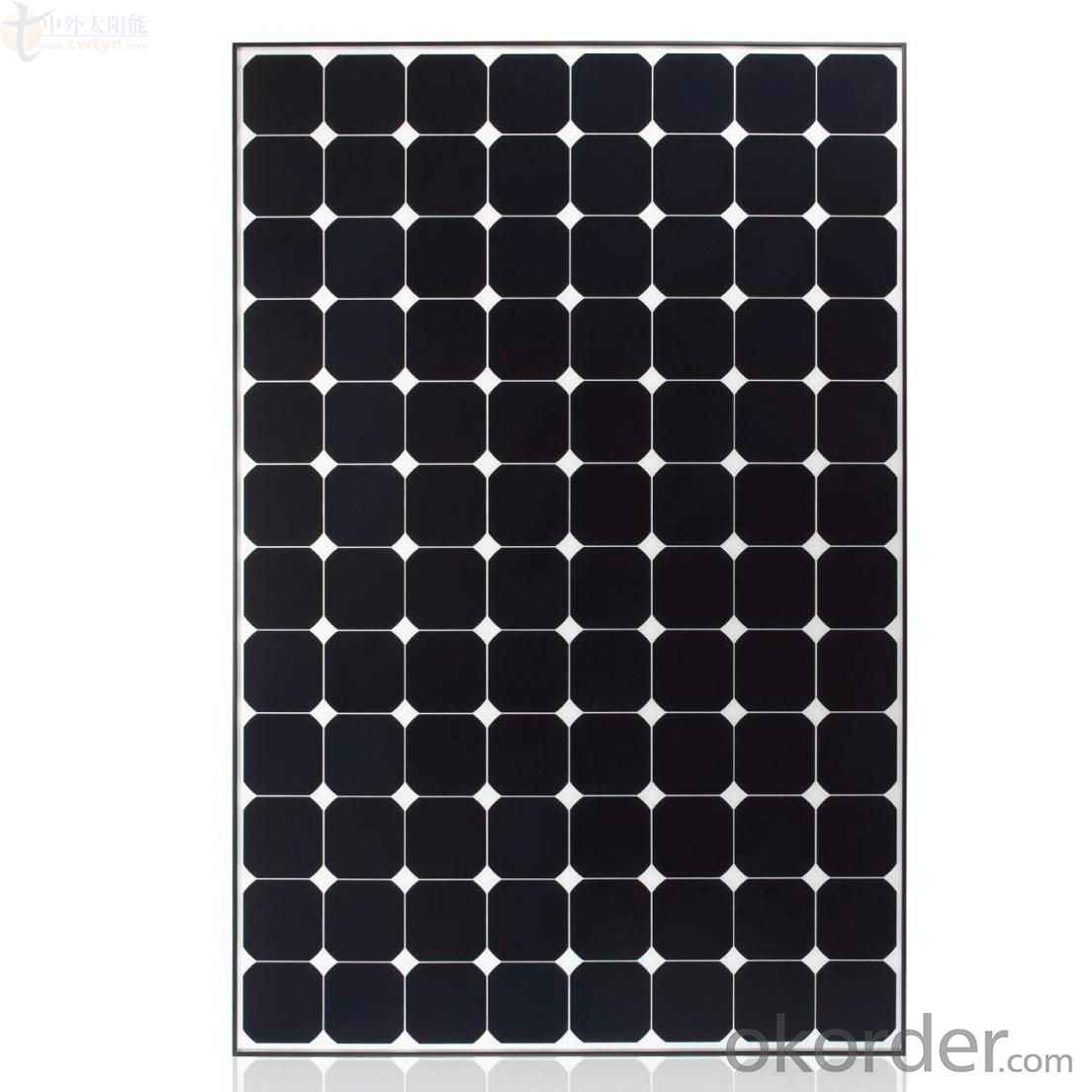
Quick Details
Place of Origin: | China (Mainland) | Brand Name: | CNBM | Model Number: | XRP-156M-250W |
Material: | Monocrystalline Silicon | Size: | 1620x992x40mm | Number of Cells: | 60 |
Max. Power: | 250w | Optimum Operating Voltage (Vmp): | 28.8V | Optimum Operating Current (Imp): | 8.68A |
Open Circuit Voltage (Voc): | 36V | Short Circuit Current (Isc): | 8.87A | Maximum Power at STC (Pmax): | 250W |
Operating Module Temperature: | -40 °C to +85 °C | Maximum System Voltage: | 1000 V DC (IEC) / 600V DC (UL) | Maximum Series Fuse Rating: | 15A |
Packaging & Delivery
Delivery Detail: | two weeks after order confirmation |
Features:
1) High Module conversion efficiency, through superior manufacturing technology
2) 0 to +5W positive tolerance for mainstream products
3) Certified to withstand high wind loads and snow loads
4) Anodized aluminum is for improving corrosion resistance
5) Anti-reflective, Highly transparent, low iron tempered glass
6) Excellent performance under low light environment
Benefit:
25-year performance warrant
10-year Product warranty
Electrical Characteristics:
Item No. | XRM-250W |
Optimum Operating Voltage (Vmp) | 28.8V |
Optimum Operating Current (Imp) | 8.68A |
Open Circuit Voltage (Voc) | 36V |
Short Circuit Current (Isc) | 8.87A |
Maximum Power at STC (Pmax) | 250W |
Cell Efficiency | 17.70% |
Operating Module Temperature | -40 °C to +85 °C |
Maximum System Voltage | 1000 V DC (IEC) / 600V DC (UL) |
Maximum Series Fuse Rating | 15A |
Power Tolerance | 0/+5 % |
STC: lrradiance 1000 W/m2, module temperature 25 °C, AM=1.5;
Best in Class AAA solar simulator (IEC 60904-9) used, power measurement uncertainty is within +/- 3%
Mechanical Characteristics:
No. of Cells | 60(6X10) |
Dimensions | 1640x992x40MM |
Weight | 20.0KGS |
Front | Glass 4.0 mm tempered glass |
Frame | Anodized aluminium alloy |
Temperature Characteristics:
Nominal Operating Cell Temperature (NOCT) | 45±2°C |
Temperature Coefficient of Pmax | -0.44 %/°C |
Temperature Coefficient of Voc | -0.33 %/°C |
Temperature Coefficient of Isc | 0.055 %/°C |
Refer to the Wmp range
Our factory can produce solar panel and solar module from 1.5W-290w (1.5w, 2.5w, 5w, 10w, 20w, 40w, 50w, 60w, 80w, 85w, 125w, 135w, 150w, 165w, 180w), according to customers requirement.
(A). Wmp range: 0.01W-6W, to be sealed with epoxy resin on PCB (printed circuit board), or to be sealed in plastic directly.
(B). Wmp range: 0.01W-15W, to be encapsulated with PET, on PCB (printed circuit board)
(C). Wmp range: 1W-60W, to be encapsulated with PET, on stainless steel, with holes for assembling purpose.
(D). Wmp range: 1W-290W, to be encapsulated with tempered glass, EVA, TPT, together with aluminium frame, junction box and (if necessary)diode and cable.
Refer to the material:
Monocrystalline solar cell or polycrystalline solar cell
Efficiency range 14%-17%, cell size 5/6.
- Q: Solar panels do good more then bad?
- Sure your proper, sunlight panels (photovoltics) could be used to make electricity for small electronics. Proper now sun cells are on many calculators, and even flashlight. However the trouble is the lenght of time the cells take to charge the gadget, verses the vigour demand. I don;t consider the scale of the panels, and the period of time needed to charge the device are sensible. One think i've been thinking is that all should have a photovoltaic panel to charge a battery. Then, use the battery to cost phone telephones, MP3 palyers. The panel and the battery would be in regards to the 8 x eleven inches, and could sit down in window, or on a dash board to get charged, then utilized in doorways over night to charge contraptions.
- Q: Single crystal solar panels and polycrystalline solar panels
- Monocrystalline silicon solar cells are mainly made of monocrystalline silicon, compared with other types of solar cells, monocrystalline silicon cell conversion efficiency of the highest. In the early days, monocrystalline silicon solar cells occupied most of the market share, in 1998 after the retreat of polysilicon, the market share accounted for second. Due to the shortage of polysilicon raw materials in recent years, after 2004,
- Q: Can solar panels be installed on a barn or agricultural building?
- Yes, solar panels can be installed on a barn or agricultural building. In fact, these structures often provide ideal conditions for solar panel installation due to their large, unobstructed roofs and proximity to open spaces that receive ample sunlight. Installing solar panels on barns or agricultural buildings can help farmers and landowners generate renewable energy, reduce electricity costs, and contribute to a more sustainable future.
- Q: Can solar panels be installed on hospitals or healthcare facilities?
- Yes, solar panels can definitely be installed on hospitals or healthcare facilities. In fact, many hospitals and healthcare facilities around the world have already embraced solar energy as a sustainable and cost-effective solution. Solar panels provide a reliable source of clean energy, helping these facilities reduce their carbon footprint and dependence on traditional energy sources. Additionally, solar power can contribute to long-term cost savings, allowing hospitals to allocate more resources towards patient care and medical services.
- Q: Can solar panels be used to power air conditioning or heating systems?
- Yes, solar panels can be used to power both air conditioning and heating systems. Solar panels generate electricity by converting sunlight into energy, which can then be used to power various appliances and systems, including air conditioners and heating units. This allows for more sustainable and environmentally friendly ways of cooling and heating buildings.
- Q: Can solar panels be used to power an entire office building?
- Yes, solar panels can be used to power an entire office building. By installing a sufficient number of solar panels on the roof or surrounding areas, an office building can generate enough electricity to meet its energy needs. Additionally, by integrating battery storage systems, excess solar energy can be stored and used during non-sunlight hours, ensuring continuous power supply.
- Q: What is the impact of bird droppings on solar panels?
- Bird droppings can have a negative impact on solar panels as they can reduce the efficiency of the panels by blocking sunlight. The droppings can create shadows and reduce the amount of sunlight that reaches the panels, leading to decreased energy production. Additionally, the acidic nature of bird droppings can damage the surface of the panels if not cleaned regularly, potentially reducing their lifespan. Therefore, it is important to regularly clean and maintain solar panels to ensure optimal performance and longevity.
- Q: Can solar panels be installed on warehouses?
- Yes, solar panels can be installed on warehouses. In fact, warehouses are often ideal locations for solar panel installations due to their large roof spaces, which can accommodate a significant number of panels to generate clean and renewable energy. Additionally, warehouses tend to have uninterrupted sunlight exposure, making them well-suited for solar energy generation.
- Q: Can solar panels be installed on streetlights?
- Yes, solar panels can be installed on streetlights. This allows them to generate and store their own electricity, making them more energy-efficient and reducing the reliance on grid power.
- Q: Can solar panels be installed in areas with high levels of saltwater exposure?
- Yes, solar panels can be installed in areas with high levels of saltwater exposure. However, it is important to choose solar panels that are specifically designed for these conditions and are corrosion-resistant. This may involve using materials like marine-grade aluminum or stainless steel for the panel frames, and ensuring proper sealing and coating to withstand saltwater corrosion. Regular maintenance and cleaning are also necessary to mitigate the effects of salt buildup on the panels.
Send your message to us
2000W High Quality 180W Monocrystalline Solar Panel CNBM
- Loading Port:
- Qingdao
- Payment Terms:
- TT OR LC
- Min Order Qty:
- 10 set
- Supply Capability:
- 300000 set/month
OKorder Service Pledge
OKorder Financial Service
Similar products
Hot products
Hot Searches
